Antonina Sanina, 75, had spent the last two nights hiding in the basement of her apartment block in Kupiansk. She had endured six and a half months of Russian occupation last year, but now the renewed shelling of the city had prompted her to abandon her home. “I couldn’t take it any more,” she said a few minutes after local volunteers had driven her to safety.
She said eight neighbours hid in the cellar with her as the Russians targeted what they thought, wrongly, was a barracks nearby. “You could barely sleep. It would be on and off. Then you’d just wake up and you wouldn’t know – was that an actual hit or was it a dream?” A day before she took flight, one civilian was killed and 11 injured in a daytime artillery strike on the city centre.
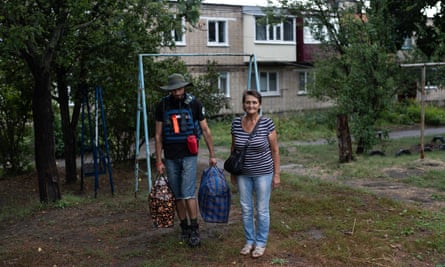
It was not supposed to be like this. Ukraine’s counteroffensive, which began in June, was intended to put Russia on the defensive. But at the beginning of August, Russian forces launched an attack in and around Kupiansk, 65 miles east of Kharkiv. Temporarily, the Ukrainians appeared caught off guard, and the frontline moved by two miles. The attackers’ strategy is grimly familiar: shells rain from positions seven or so miles away into the city and to east and south of it.
In response, local authorities announced the civilian evacuation of Kupiansk and territories to the east of it, an area home to slightly more than 10,000 people in a region that had been liberated last September. Col Gen Oleksandr Syrskyi, the commander of Ukraine’s land forces, visited the sector, discussed reinforcements with local commanders and acknowledged that the situation had become, in his word, complicated.

Members of a volunteer group called Rose on the Arm (the distinctive name describes a tattoo on the first person they rescued at the start of the war) drive daily from busy Kharkiv to the eerily quiet Kupiansk and across the Oskil River that divides the city, rescuing people who are without their own means of escape. It is dangerous work, particularly across the waterway.
Oleksander Gamanyuk, 37, who leads a team that the Guardian joined on Monday last week, said his group had evacuated 70 people from their homes in the last 10 days. Each morning they check the news to judge where it is safer to go. “When we are on the western side of Kupiansk it is maybe 30% likely that we will get shelled. On the other side? It’s 80%” he said.
Kupiansk was badly damaged as Ukrainian forces liberated it nearly a year ago. The main bridge was destroyed, forcing drivers to take a low, muddy track to reach the centre and the pickup points. We stayed on the relatively safer western side, collecting Sanina and a man relatively quickly, although the evacuation was complicated by a loud thunderstorm rolling in at the same time, its bright flashes and rumbles adding to the nervousness.
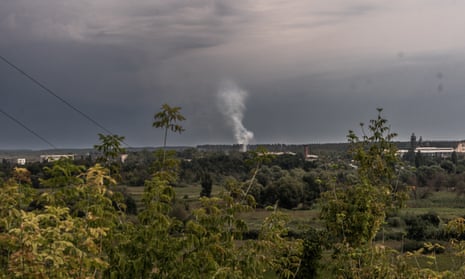
Fortunately, no shells landed in west Kupiansk during the evacuation, which took about an hour. Smoke could be seen rising from a handful of artillery strikes on the far side of the river as the rain eased. The closest Russian positions were on higher ground on the horizon, and some time after we left, more shells struck both sides of the city.
Sanina was first taken to a processing centre where her paperwork was briefly checked, by which time the sun had returned. There, the evacuation team connected up with a second group, who had crossed the river to pick up a couple. Mykola and Zoia Moieseienko, 68 and 72, had just abandoned their apartment in the village of Bohuslavka, south of Kupiansk, where they had moved to spend their retirement after years working in mining.
The shelling had not been as intense where they were, though Zoia described an evening when they hid in a bathtub as bombs landed nearby. But what they had feared was a return of the Russians.

They too had stayed through the Russian occupation, during which time they could not draw their pensions and food was short. “Before, we didn’t know what war was like, but now we have experienced it we definitely don’t want it again,” Zoia said. “And next time they will be angrier. We don’t want to be taken to Siberia.”
From the processing centre, the Moieseienkos were to be driven to Kharkiv where they could be housed temporarily until somewhere permanent was found. For people who had lost their home and were facing an uncertain future, they were astonishingly cheerful. “We may be old but we just want to live,” Zoia said.
Later, she showed off a picture on her phone of her celebrating when the Ukrainians had liberated their now abandoned village, and she insisted on handing over a Ukrainian flag as a gift.
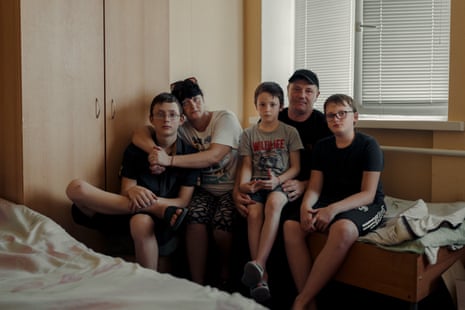
At a resettlement centre in Kharkiv run by the charity International Rescue, Inna and Oleh were living with their three sons in a cramped single room. They had abandoned their small farm, which lies a dozen or so miles south-east of the Moieseienkos’ apartment, a week earlier. Everything had changed suddenly “two, two and half weeks ago”, Inna said – in early August, when their village of Cherneshchyna, four miles from the frontline, came under sustained Russian fire.
“It was everything – airplanes, aviation, artillery, explosions,” Oleh said, and it rapidly became unbearable. The children were first moved away with a grandparent, before the parents finally fled. Oleh had remained at the farm during the Russian occupation and when it ended the family had high hopes for the future. “When Ukraine came and took back these territories, we thought the frontline was going to go farther [east] into Luhansk region,” Oleh said.
Oleh Syniehubov, the Kharkiv regional governor, said about 600 local people had decided to leave their homes in the past fortnight. That left 12,000 remaining, who the governor argued were not necessarily pro-Russian but rather often clinging on to “their basic ancestral home” where “all their relatives and family live”. Those leaving get an allowance worth 2,200 hryvnia (£47) each for three months to help them relocate, a sum sufficiently modest to make the poorest hesitate.
Serhiy Cherevatyi, a spokesperson for the Ukrainian command on the eastern front, said Russian forces were firing about 500 artillery shells a day between Kupiansk and Lyman, significantly more than the sector’s defenders. “If there are four strikes [by the Russians], we respond with one,” he said, although he added that the defenders’ positions had been holding firm, a point reinforced by battle maps that show no recent change in frontline positions.
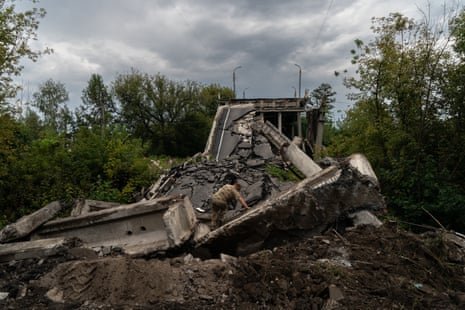
Soldiers on the ground, however, talk darkly of fears that Russia, which has an estimated 100,000 troops in the sector, wants to make Kupiansk a “Bakhmut 2.0” with a slow, grinding assault designed perhaps to restore its position to the line of the Oskil. Outside Kupiansk, an English-speaking soldier introduced himself; it turned out he was a machine gunner redeployed to defend the area.
In Kharkiv, a demonstration of the impact of the fighting can be found in and around a Soviet-era sanatorium converted into a rehabilitation centre for soldiers in need of psychological support and used to give them a short break from the frontline. Its director, Ihor Prykhodko, a psychologist and army colonel, has led the design of a two-week rehabilitation course.
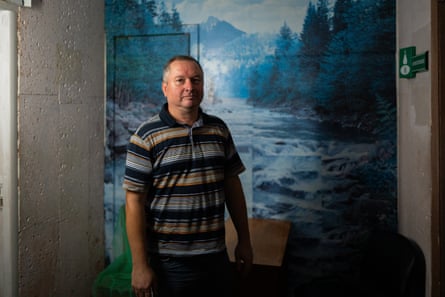
This centre, one of five around the country, caters for 100 soldiers at a time, with a programme containing elements ranging from aromatherapy and swimming through to individual and group therapy sessions – we visited one session discussing what to do when your buddy freezes with fear on the frontline.

Prykhodko said the courses were originally a week long but had to be doubled in length because the war had dragged on. Soldiers arrived feeling “moral, mental and physical exhaustion,” he said, with sleep problems the most common symptom, worsened by lack of rotations from the frontline. But Ukraine needs troops and 90% are sent back to the battlefield, and the military psychologist said he worried about the long-term trauma that lay ahead.

On the course were several soldiers from the 32nd brigade, last recorded as fighting near Inna and Oleh’s abandoned farm south-east of Kupiansk, where they acknowledged combat had been heavy. At an equine therapy session off-site where combat veterans groom, saddle and ride horses, there were complaints from soldiers that they had been trained in Germany to use US Bradley fighting vehicles but had been kitted out with Vietnam war-era M113s instead.
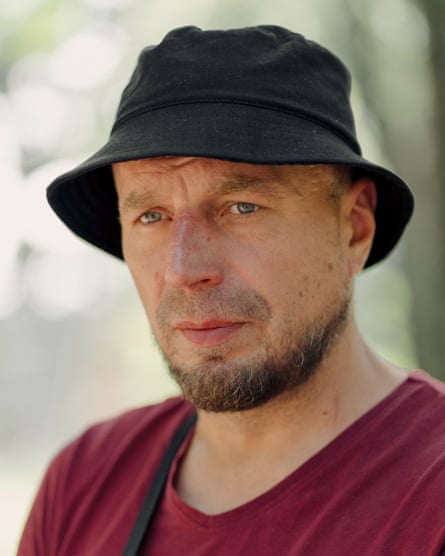
An M113 commander who uses the call sign Pteropus (flying fox) was eager to return, having been sent on the course after receiving shrapnel wounds when he was struck by a mortar. Significantly, perhaps, Pteropus had volunteered in the early days of the war and was clear in his mind what he was fighting for. “I joined not to play war games, I joined because I cared for the future of Ukraine,” he said. His vision was for his country to be “very free, very open, where anybody can do what they want to do”.
Prykhodko introduced another soldier at the sanatorium, Vitalli, 45, who appeared to be profoundly exhausted. Vitalli said he was a decorator before the war and had responded somewhat reluctantly to a call-up at the beginning of the year, training in Germany as a sniper. A friend he had known since childhood had been killed in battle near him, and he said it had not been possible to recover the body because somebody wounded had to be rescued instead.
The four days of rest he had had so far had helped a little. “I can sleep now, and I couldn’t before,” he said, before going on to describe the night-time screams of other soldiers at the sanatorium. Then he returned to his own condition, recounting a recurring dream he had when was on the frontline. “When you sleep there,” he said, “you have a dream how you go back home, but you can never make it.”
Additional reporting by Artem Mazhulin
‘I couldn’t take it any more’: holdouts quit Kupiansk after renewed Russian shelling - The Guardian
Read More

No comments:
Post a Comment